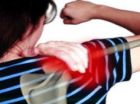Knot in the ribbon at the edge of the solar system 'unties'
2010-10-01
(Press-News.org) The unusual "knot" in the bright, narrow ribbon of neutral atoms emanating in from the boundary between our solar system and interstellar space appears to have "untied," according to a paper published online in the Journal of Geophysical Research.
Researchers believe the ribbon, first revealed in maps produced by NASA's Interstellar Boundary Explorer (IBEX) spacecraft, forms in response to interactions between interstellar space and the heliosphere, the protective bubble in which the Earth and other planets reside. Sensitive neutral atom detectors aboard IBEX produce global maps of this region every six months.
Analyses of the first map, released last fall, suggest the ribbon is somehow ordered by the direction of the local interstellar magnetic field outside the heliosphere, influencing the structure of the heliosphere more than researchers had previously believed. The knot feature seen in the northern portion of the ribbon in the first map stood apart from the rest of the ribbon as the brightest feature at higher energies.
While the second map, released publicly with the just-published paper, shows the large-scale structure of the ribbon to be generally stable within the six-month period, changes are also apparent. The polar regions of the ribbon display lower emissions and the knot diminishes by as much as a third and appears to "untie" as it spreads out to both lower and higher latitudes.
"What we're seeing is the knot pull apart as it spreads across a region of the ribbon," says Dr. David J. McComas, IBEX principal investigator and an assistant vice president at Southwest Research Institute in San Antonio. "To this day the science team can't agree on exactly what causes the knot or the ribbon, but by comparing different sky maps we find the surprising result that the region is changing over relatively short time periods. Now we have to figure out why."
As the IBEX spacecraft gathers a wealth of new information about the dynamic interactions at the edge of the solar system — the region of space that shields our solar system from the majority of galactic cosmic ray radiation — the IBEX team continues to study numerous theories about the source of the ribbon and its unusual features.
The paper, "The evolving heliosphere: Large-scale stability and time variations observed by the Interstellar Boundary Explorer," by D.J. McComas, M. Bzowski, P. Frisch, G.B. Crew, M.A. Dayeh, R. DeMajistre, H.O. Funsten, S.A. Fuselier, M. Gruntman, P. Janzen, M.A. Kubiak, G. Livadiotis, E. Mobius, D.B. Reisenfeld, and N.A. Schwadron, was published online Sept. 29 in the American Geophysical Union's Journal of Geophysical Research.
IBEX is the latest in NASA's series of low-cost, rapidly developed Small Explorers space missions. Southwest Research Institute in San Antonio leads and developed the mission with a team of national and international partners. NASA's Goddard Space Flight Center in Greenbelt, Md., manages the Explorers Program for NASA's Science Mission Directorate in Washington.
INFORMATION: END
ELSE PRESS RELEASES FROM THIS DATE:
2010-10-01
U.S. Department of Agriculture (USDA) scientists in Athens, Georgia, have reported for the first time that several species of Aspergillus niger, or black aspergilli, are capable of infecting corn and peanuts as endophytes. The researchers also showed that, under laboratory conditions, these species produced mycotoxins.
Using a molecular procedure they developed, USDA Agricultural Research Service (ARS) research leader Charles Bacon, microbiologist Dorothy Hinton, and Edwin Palencia, a graduate student in the Department of Plant Pathology of the University of Georgia in ...
2010-10-01
MANHATTAN, KAN. -- Less academically promising students should not be discouraged from setting high educational goals, according to one Kansas State University professor's research.
Chardie Baird, K-State assistant professor of sociology, and John Reynolds, Florida State University professor of sociology, looked at the mental health consequences of shooting for the stars versus planning for the probable in their publication "Is There a Downside to Shooting for the Stars? Unrealized Educational Expectations and Symptoms of Depression."
Their research, published earlier ...
2010-10-01
(Garrison, NY) Research ethics review committees often require all women of childbearing age who enroll in clinical trials to use contraceptives to protect against a developing fetus being exposed to potentially harmful drugs. A mandatory contraceptive policy is often imposed even when there is no evidence that a trial drug could harm a fetus or when women have no chance of becoming pregnancy. This requirement is excessive and can safely be relaxed in many cases, according to a report in IRB: Ethics & Human Research.
Policies on contraceptive use in research should reflect ...
2010-10-01
Researchers of the University of Granada, in collaboration with the Centre for Sensory-Motor Interaction of the University of Aalborg, Denmark, and the University Rey Juan Carlos, Madrid, conducted a research on chronic impingement syndrome. The study revealed that excessive activation of specific neck and shoulder muscles during daily life or while playing sports –as swimming– is the cause of a high number of injury and shoulder
A Common Pain
The pattern of the pain originated in these muscles –sometimes in regions far from the shoulder– coincides with most of the symptoms ...
2010-10-01
New research by Rice University scientists suggests that a class of material known as metallacarborane could store hydrogen at or better than benchmarks set by the United States Department of Energy (DOE) Hydrogen Program for 2015.
The work could receive wide attention as hydrogen comes into play as a fuel of the future for cars, in fuel cells and by industry.
The new study by Rice theoretical physicist Boris Yakobson and his colleagues, which appears in the online Journal of the American Chemical Society, taps the power of transition metals scandium and titanium to ...
2010-10-01
KINGSTON, R.I.-– September 30, 2010 –Watching television and its heavy dose of medical content in news and drama can lead to more concern about personal health and reduce a person's satisfaction with life according to a new study out of the University of Rhode Island.
The study, authored by Yinjiao Ye, assistant professor of communications studies found that TV viewing affects people's awareness of health-risks and whether they believe they can protect their own health. People develop these perceptions because TV viewing leads them to believe they have a greater likelihood ...
2010-10-01
A team of chemists from the University of Seville (US) has managed to distinguish between different kinds of tea leaves on the basis of their mineral content and by using artificial neural networks. This technique makes it possible to differentiate between the five main varieties of tea – white, green black, Oolong and red tea.
"This method makes it possible to clearly differentiate between the five types of tea – something that is often not easy to do by eye alone – by using analysis of the leaves' mineral content and then mathematically processing these data", José ...
2010-10-01
Northwestern University researchers have taken another step towards realizing a new class of polymerase chain reaction (PCR) enzyme mimics, opening the door for the development of highly sensitive chemical detection systems that go beyond nucleic acid targets.
The blueprint for building synthetic structures to detect and signal the presence of targets such as small molecule medical analytes (signalers of disease or bodily malfunction, such as neurotransmitters) and environmental hazards, such as TNT, to name just a few, is inspired by biology and its allosteric enzymes. ...
2010-10-01
As researchers and policymakers work toward an effective HIV vaccine in a constrained global economy, cost-effective prevention strategies such as Couples Voluntary Counseling and Testing (CVCT) must take a larger role in efforts to decrease the rates of HIV/AIDS in Africa, says Emory University HIV/AIDS vaccine researcher Susan Allen, MD, MPH.
Allen, who has worked to combat the AIDS epidemic in Africa for more than 25 years, highlighted the value of CVCT and other cost-effective HIV prevention strategies today at the AIDS Vaccine 2010 Conference in Atlanta.
"The ...
2010-10-01
A break in the two chromosomes has given scientists a break in finding a new gene involved in puberty, Medical College of Georgia researchers report.
It's also helped clear up why some patients with delayed puberty have no sense of smell, said Dr. Lawrence C. Layman, chief of the MCG Section of Reproductive Endocrinology, Infertility and Genetics.
The WRD11 gene interacts with a transcription factor that appears to be involved in development of gonadotropin releasing hormones that enable sexual maturation as well as olfactory neurons in the brain, according to a study ...
LAST 30 PRESS RELEASES:
[Press-News.org] Knot in the ribbon at the edge of the solar system 'unties'


